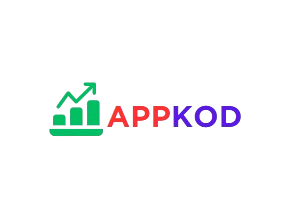As the digital landscape evolves, businesses need to utilize online advertising to connect with their target audience. Google Ads is one of the most effective advertising systems in existence. It’s an advertising system that allows businesses to display ads on Google’s search results pages, YouTube, and other partner sites, known as pay-per-click (PPC) ads. In this article, we will delve into Google Ads, the advantages it offers, its working mechanism, and best practices to optimize its use.
What is Google Ads?
Google Ads (previously Google AdWords) is an online advertising platform created by Google. It enables advertisers to place bids on certain keywords that will cause their clickable ads to appear in Google’s search results and on its advertising network. Advertisers are paid for these ads according to clicks (CPC), impressions (CPM), or conversions (CPA), which makes cost-effective to attract potential customers.
Benefits of Google Ads
- Google Ads provides immediate business visibility as compared to search engine optimization(SEO) which takes time.
- Targeted Audience: Advertisers can specify their target audience based on their demographics, geography, interests, and search intent.
- Trackable ROI: Google Ads offers in-depth analytics, enabling companies to measure their ad success and make adjustments as needed.
- Scalability: Google Ads can be scaled to fit your advertising needs, whether you are a small business or a corporation.
- Brand Awareness: Your ad may not get clicked on, but when it appears at the very top of search results, brand awareness naturally increases.
How Google Ads Works
- Bid Management for Google Ads — Google Ads is a pay-per-click media channel. Here’s how the process works:
- Keyword Research: The advertiser selects keywords related to their product that users would likely search.
- Ad Auction: Google conducts an auction every time a user searches for a keyword to determine which ads will display, and in what order.
- Ad Rank Calculation: To determine Ad Rank, Google takes into account bid amount, ad quality, anticipated click-through rate (CTR), and landing page experience.
- Ad Positioning: Ads are placed according to Ad Rank at the top or bottom or to the right of SERPs.
- CPC(Cost Per Click): Depends upon the clicking on the ad by the user.
Google Ads Campaign Types
- Search Campaigns: Ads based on text that display in search results in Google.
- Display Campaigns : These are Image or banner ads that show up on google Display Network (GDN).
- Shopping Campaigns: Ads that show product ads in Google Shopping and in search results.
- Video Campaigns: Video ads that appear on YouTube and other partner websites.
- App campaigns: Ads focused on driving installations of mobile apps.
- Performance Max Campaigns: The fully automated way to optimize your ads everywhere in Google.
Bidding Strategies for Google Ads
- Last but not the least, Google Ads provides a number of bidding strategies to prioritize ad performance.
- Manual CPC: Advertisers choose a bid cap.
- Enhanced CPC: Google modifies bids depending on the chances of a conversion.
- Maximize Clicks: Instead of a target, Google maximizes bids to get as many clicks as possible given the budget.
- Target CPA (Cost Per Acquisition): Google seeks to purchase conversions for a predetermined cost.
- Target ROAS (Return on Ad Spend): Google will bid to get a certain return on investment.
- Maximize Conversions:Automatically sets bids to maximize conversions.
- Target Impression Share: Places ads in a certain location in search results.
Guidelines to run a successful Google Ads campaign
Do Extensive Keyword Research: Leverage Google Keyword Planner to discover high-intent keywords;
- Write Great Ad Copy: Make sure your ad copy is clear and concise, with a strong call-to-action (CTA).
- Improve Landing Pages: Learn how to make landing pages fast, mobile-friendly, and relevant to the ad content.
- Utilize Ad Extensions: Leverage site links, callouts, structured snippets, and location extensions to enhance ad exposure.
- Monitoring and Optimization: A/B tests, quality score, CTR, conversion rate, etc.
- A/B Testing: Utilise A/B testing to discover which creatives, headlines, and keywords work the best.
- Establish a Genuine Budget: Begin with a significantly conservative budget and retroactively adjust based on performance.
- Use Negative Keywords: Filter out irrelevant keywords to avoid spending ad dollars on these.
- Utilize Remarketing: Target users that have previously visited your site without converting.
- Enable Conversions Tracking: Configure Google Analytics and track conversions to assess effectiveness of campaigns.
Common Mistakes to Avoid
- Neglecting Negative Keywords: Omitting negative keywords may result in unwanted traffic and budget loss.
- Badly Structured Campaigns: If unrelated keywords are grouped together, ad relevance and quality score will be impacted.
- Not Tracking Conversions: You can’t measure success without conversion tracking.
- Broad match Keywords Have Low Relevance: Broad match Keywords tend to get clicks that are not relevant, leading to costs that are way too high.
- Failing to Optimize for Mobile: Many consumers browse on mobile, which means ads and landing pages must be mobile-friendly.
- Disregarding Quality Score: A low-quality score can lead to higher CPCs and lower ad visibility.
Conclusion
When looking to increase online visibility, drive traffic and increase conversions Google Ads is a powerful way to do so. But to be effective in the end, a strategic integration, permanent adjustments and improvements must bring to effect. Through understanding how Google Ads works, using the right bidding strategies, learning best practice businesses can increase their return on investment and achieve their advertising goals.
With over 10 times the number of internet users compared to any other platform, mastering Google Ads will give you a competitive edge in the digital world, no matter if you are new or experienced in marketing. Get optimizing those campaigns to unleash the complete power of Google’s advertising edge!






Leave a Reply